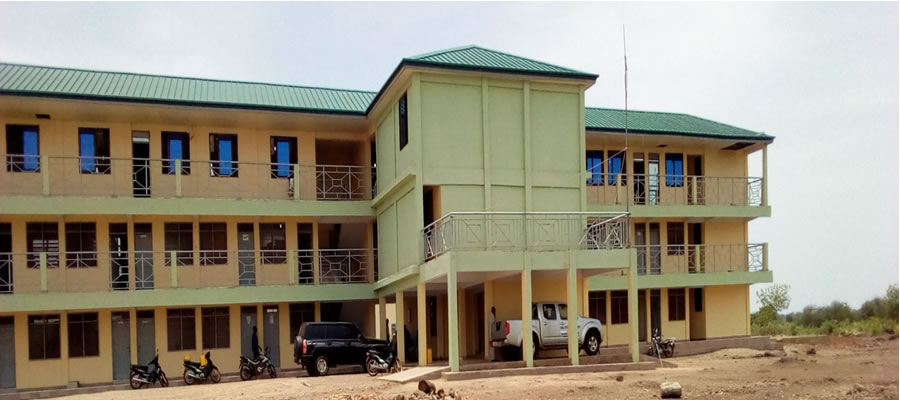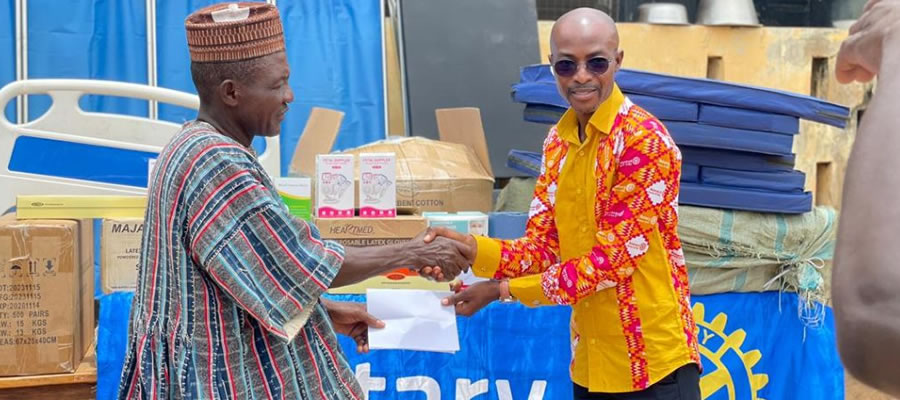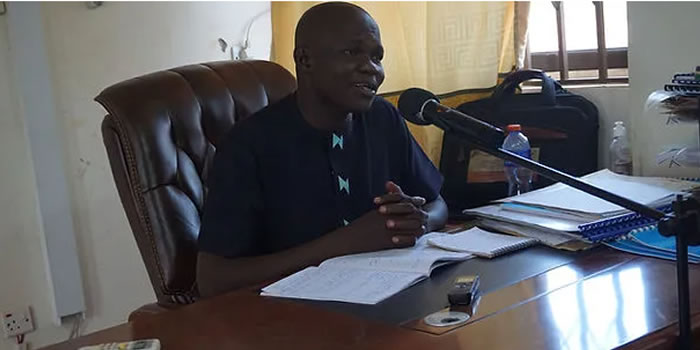

Physical Features
The physical features of the Lambussie-Karni District is made up of the natural environment namely climate, vegetation, relief and drainage, location and size, the social and cultural environment in which the people live. The physical and socio-cultural environments are therefore essential elements or factors affecting the socio-economic development of the district.
Natural environment
The district can be described as savannah vegetation consisting of short trees and grasses. This is a critical element of the natural environment. There are three forest reserves in the district covering approximately sixty (60) acres of land. The impact of human activities on the built environment like building of houses and road construction is also enormous. All the above stated human activities call for proper land management.
Location and size
The Lambussie-Karni District has a total land area of 811.9 square kilometres and shares boundaries to the south with Jirapa District, to the east with Sissala West District, to the west with the Nandom District and to the north with Burkina Faso. The district therefore serves as the gate way to Burkina Faso at Hamile in the northern part of the district. The location of the district is strategic as its proximity to Burkina Faso enhances cross border trade Fig. 1.1 shows the map of the district.
Climate and vegetation
The district is situated in the Tropical Continental Climatic Zone with mean-annual temperature ranging between 28 and 31 degrees Celsius. It experiences a single rainy season which starts in May and ends in September giving way to a long dry season usually from October to April.
The district also experiences an erratic pattern of rainfall which varies from year to year resulting occasionally in intermittent drought and flooding. Annual rainfall ranges between 900-1,100mm. 2
The district lies within the Guinea Savannah woodland vegetation with light undergrowth and scattered trees. Trees such as dawadawa and baobab are ubiquitous in the district. These trees are of economic importance as most people depend on them for their livelihood.
Geology and soil
The Lambussie-Karni District has an extensive Birimian formation with concentration of granite rocks around Lambussie, Bangwon and Billaw. The granite rocks store considerable quantities of ground water and therefore support the sinking of boreholes and hand-dug wells.
The major soil type in the district is sandy loam, with undulating hard pan concentrations. There are however strips of alluvial soils along the valleys and the tributaries of the Black Volta, suitable for rice farming.
It is gratifying to note that the sandy loamy soils are fertile and suitable for the cultivation of cereals like maize and sorghum, and leguminous crops such as cowpea and groundnuts on a large scale. The presence of gravel and clay deposits in the District presents an opportunity for the construction of bricks and tiles, paint and pottery industries.
Topography and drainage
Generally, the landscape of the district is flat and low-lying, with an average height of 300 meters above sea level. There are some plateau spots ranging in height from 300-350 meters around Bangwon, Lambussie, Nabaala and Billaw areas. These areas are believed to have gold deposits in large quantities.
There is therefore a potential for mining activities in those areas. Drainage is quite poor as there are no major rivers, except a few tributaries of the Black Volta. The only major stream is the Bugbele at Piina. In the dry season, all the water sources dry up, leaving the district with no surface water.
The district abounds in valleys for the development of dams and dug-outs for small scale irrigation, fishing and watering of animals, particularly in the long dry season.
Date Created : 4/10/2018 7:13:37 AM










 facebook
facebook
 twitter
twitter
 Youtube
Youtube
 +233 593 831 280
+233 593 831 280 0800 430 430
0800 430 430 GPS: GE-231-4383
GPS: GE-231-4383 info@ghanadistricts.com
info@ghanadistricts.com Box GP1044, Accra, Ghana
Box GP1044, Accra, Ghana